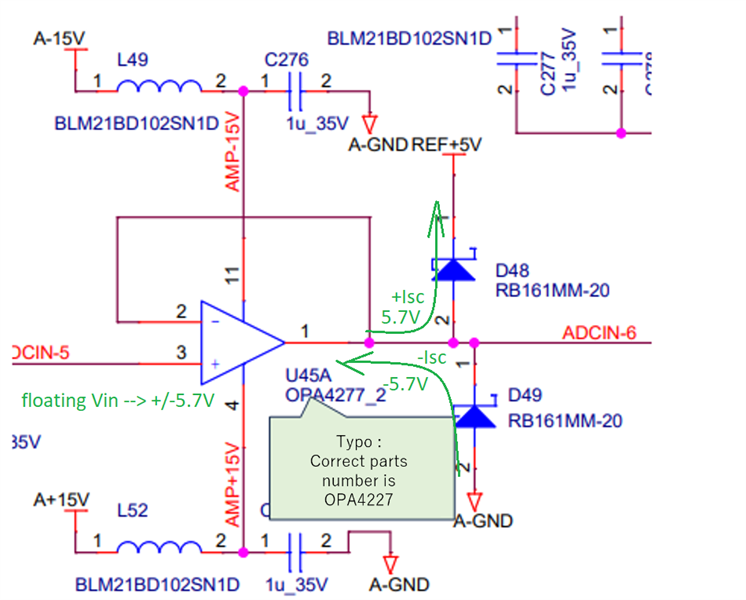Hello,
Let me confirm whether you have ever heard following condition.
Could you confirm below and give me your opinion or comment ?
* My customer use OPA4227.
They use 4ch opamp with voltage follower.
However, in their case, sometimes there is the case that one of or multiple opamp input become open. (OPAMP's input come from connector. sometimes one of or multiple opamp's input connector become disconnect.)
In this condition, they saw heating issue on OPAMP (Surface temp become approx 80 degree.)
Customer guess that high current flow to diode in this condition.
However, output load condition is same between input condition is open and normal operation.
So, we wonder why we see this condition only input condition is open...
Do you have any idea ?
Finally, Here is customer's circuit arround opamp.
If you have any question about condition, please let me know.
Best Regards,
-
Ask a related question
What is a related question?A related question is a question created from another question. When the related question is created, it will be automatically linked to the original question.




